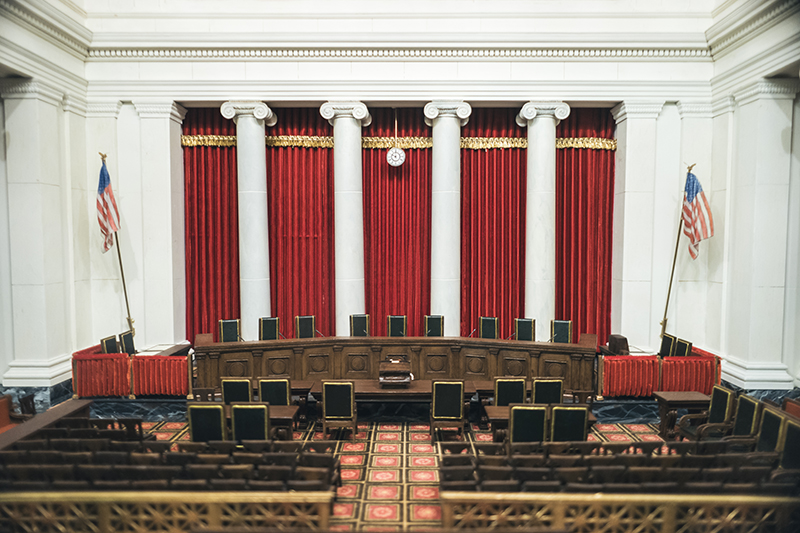Congressional Republicans hoping to advance their federal deregulation agenda are expected to have an ally if nominee Brett Kavanaugh is approved by the Senate to join the Supreme Court.
The justice, who currently sits on the U.S. Court of Appeals for the District of Columbia Circuit, was nominated this month by President Donald Trump to fill the seat of retiring Supreme Court Justice Anthony Kennedy. The Hill reports that Kavanaugh is in the process of providing “details about his health, employment history and tax information, as well as a financial statement requesting details on his assets and liabilities.”
After he submits that paperwork, the Senate will hold confirmation hearings. Majority Leader Mitch McConnell says he expects those hearings to begin “in late August or early September” so that, if he’s confirmed, Kavanaugh could join the court when its next term begins in October. He needs a simple majority to be confirmed. Republicans have a 51-49 advantage in the Senate, but John McCain hasn’t been to Washington, D.C., for votes since before the start of the year. There’s also talk that several Democrats running for re-election in states Trump won (West Virginia, Indiana and North Dakota) may also support the nomination.
While on the D.C. Circuit Court bench, Kavanaugh’s opinions tracked closely with GOP efforts to limit the scope of the federal bureaucracy, particularly when it came to weighing the costs of implementing new regulations.
For example, in 2014 Kavanaugh argued that the Environmental Protection Agency had overstepped its authority in issuing new air toxics standards, since the agency had not sufficiently considered costs (estimated at more than $9 billion) when it determined it was “appropriate and necessary” to regulate certain toxic emissions from power plants.
Kavanaugh’s argument was the minority opinion in that case. But it’s become an important opinion, as it was later cited when the case was heard by the Supreme Court. In that case, the high court eventually sent the rule back to EPA for reconsideration. That decision has set off a series of Supreme Court rulings that have influenced and changed how lower courts assess the cost burden of regulations.
NAIOP advocates for sensible EPA regulations that protect the environment while encouraging development. Should he be confirmed, Kavanaugh’s focus on weighing the costs and benefits of proposed regulations will likely play a central role in future rulemaking efforts. This will be especially critical in the case of the EPA’s Waters of the U.S. (WOTUS) rule, and the creation or modification of other regulations which impact NAIOP members and their businesses.
Republicans in Congress have used similar logic in advocating for, and advancing deregulation bills. Last year, the House passed the Regulatory Accountability Act (H.R. 5), which would place a greater emphasis on cost considerations in the creation of new agency rules, as well as the REINS Act (H.R. 26), SCRUB Act (H.R. 998 and S. 21), and others, with similar aims.
Just last week, lawmakers in the House passed H.R. 50, the Unfunded Mandates Information and Transparency Act of 2017. The bill would give lawmakers more tools to review the costs imposed by regulatory agencies. For example, it would “modify the definition of ‘direct costs’ to require [the Congressional Budget Office] to consider, in accounting for the costs of federal mandates, forgone business profits, costs passed onto consumers and other entities, and behavioral changes.”
For its part, the Trump administration has also worked to limit the scope of the federal bureaucracy. In the second week of his presidency, Trump signed an Executive Order on Reducing Regulation and Controlling Regulatory Costs, which directed agencies to repeal two existing regulations for every new regulation imposed, the so-called “one-in two-out” rule.
So far, the White House says is delivering a regulatory budget that’s “below-zero.” It says regulatory costs are either remaining the same or declining, but are not increasing. Also, the administration predicts a savings of $10 billion this year from reduced regulatory costs.














